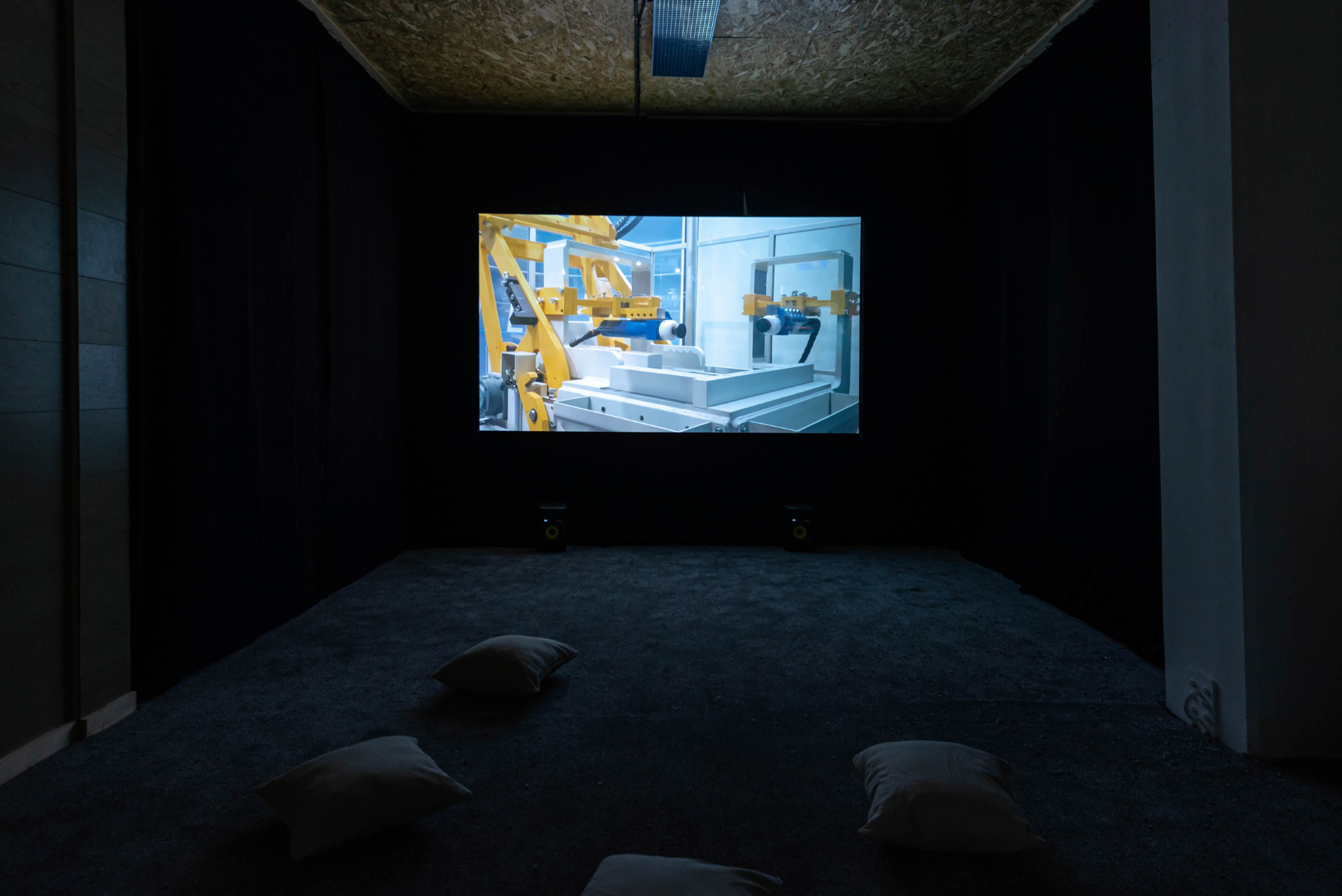
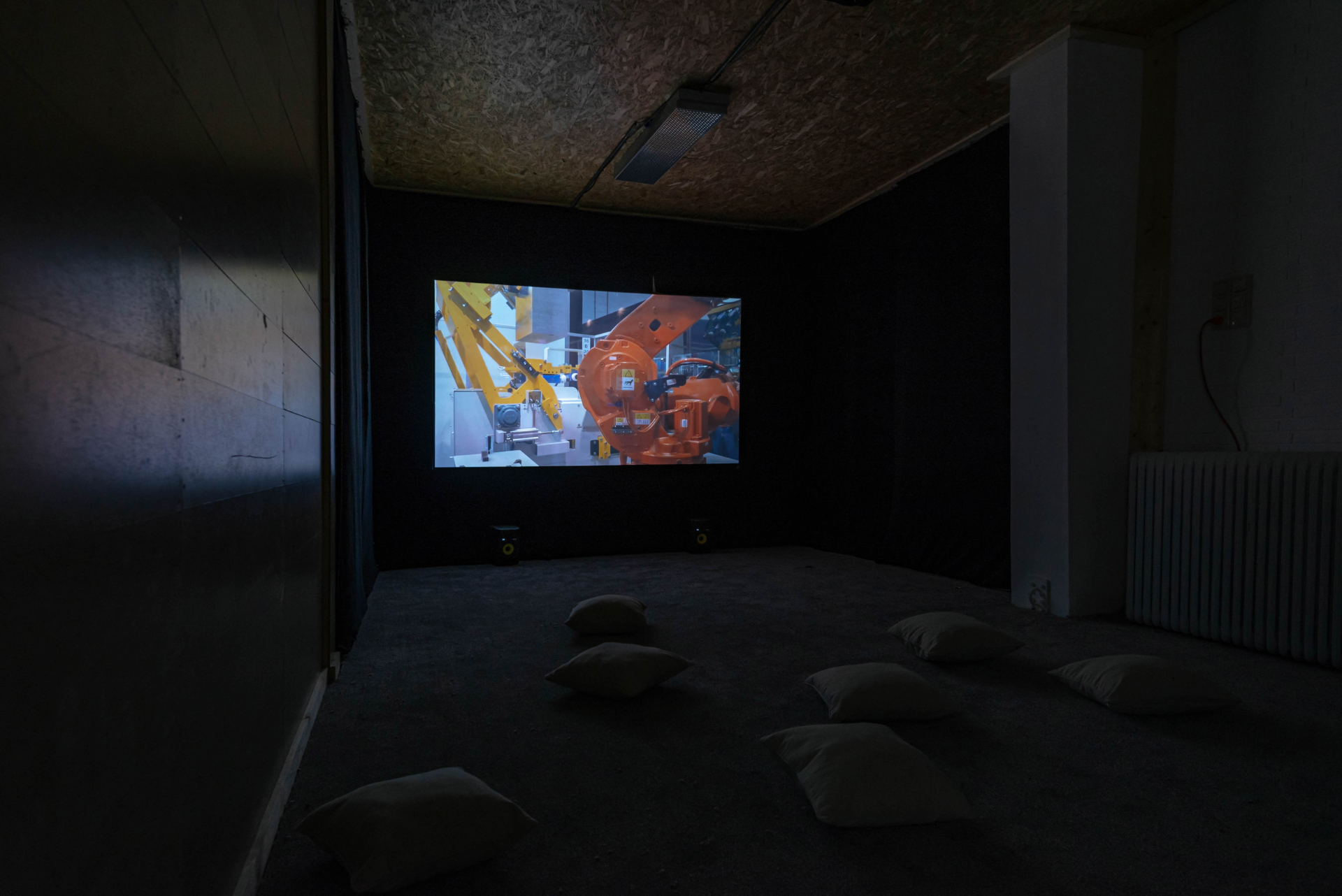
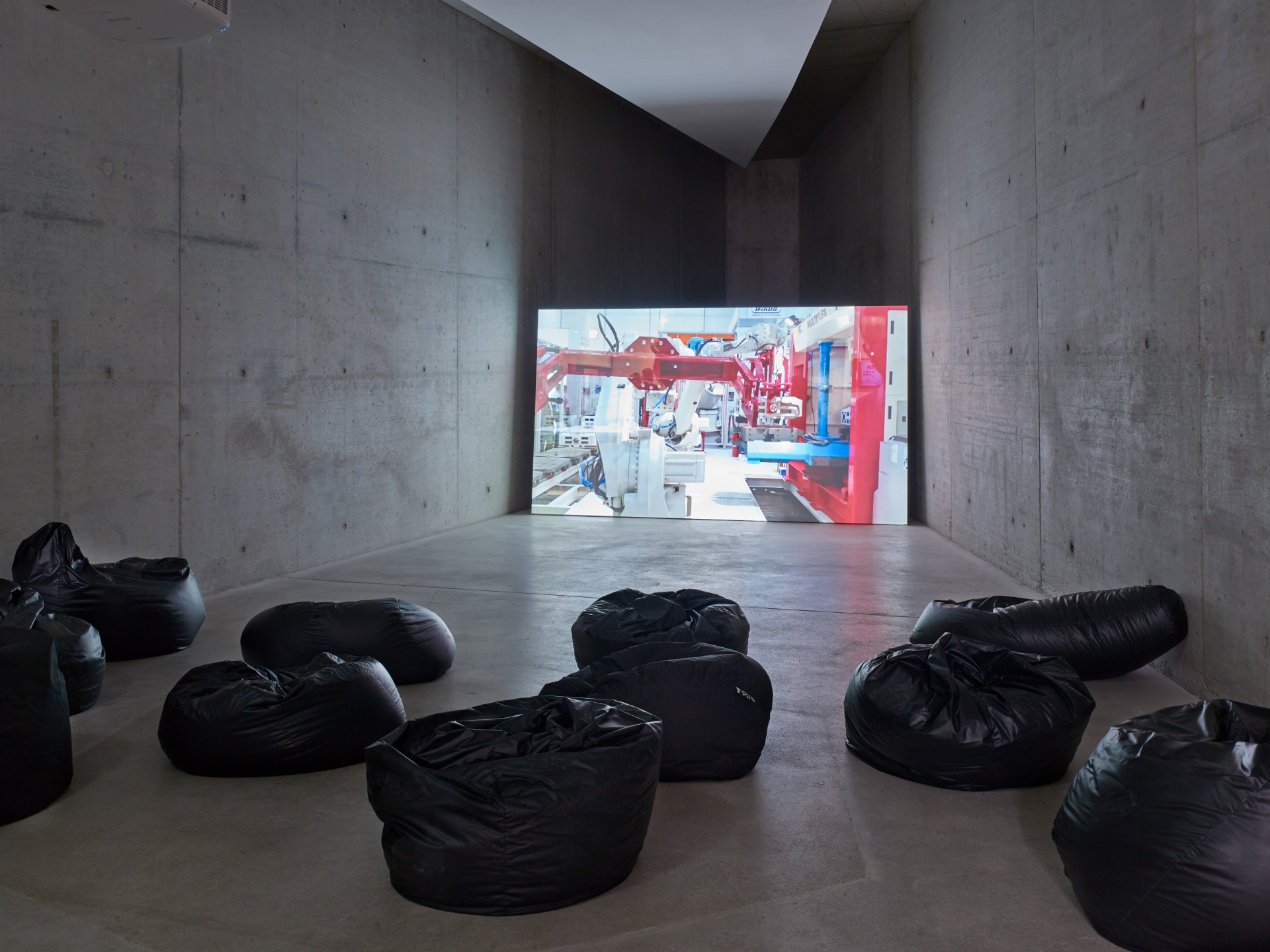
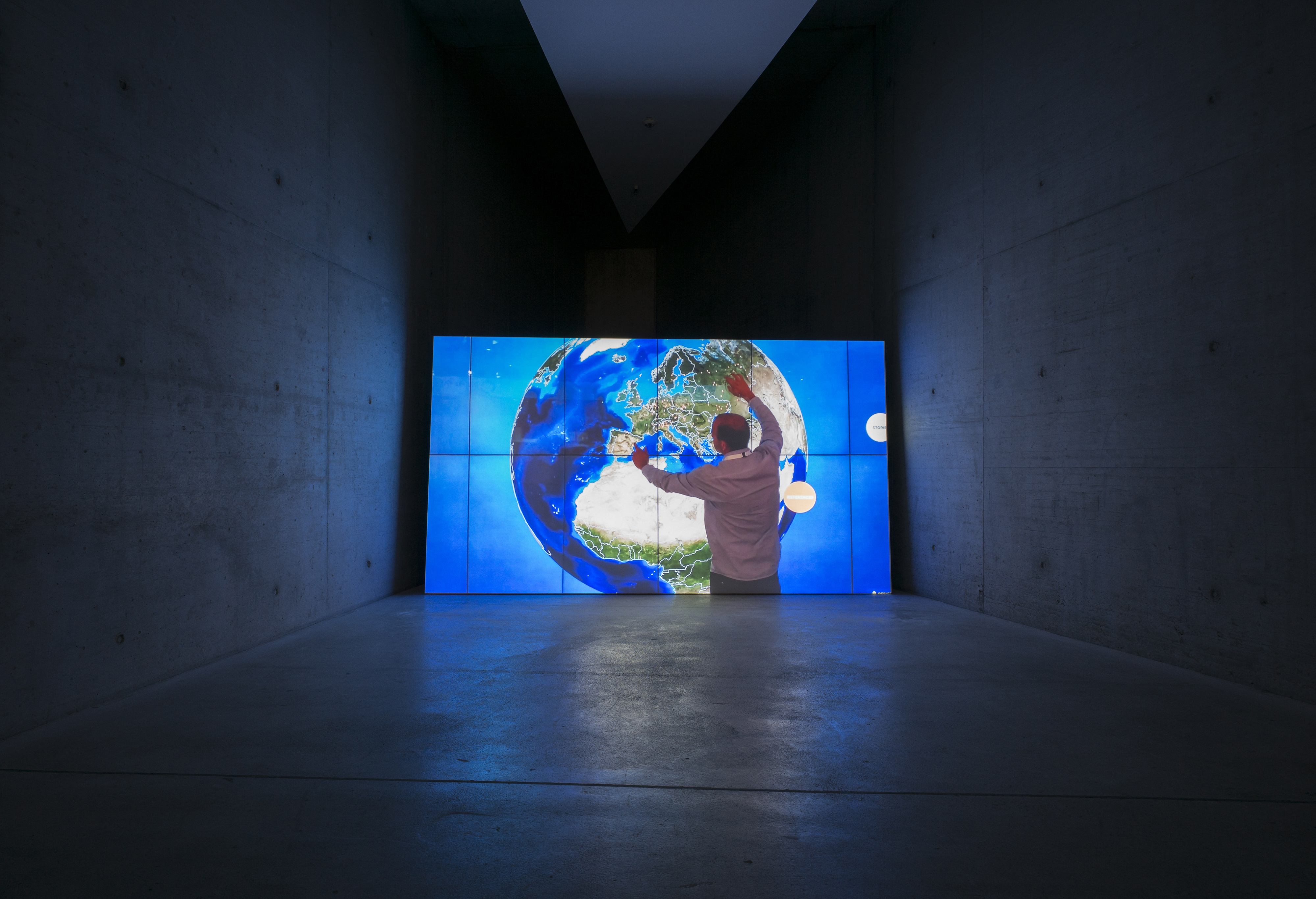
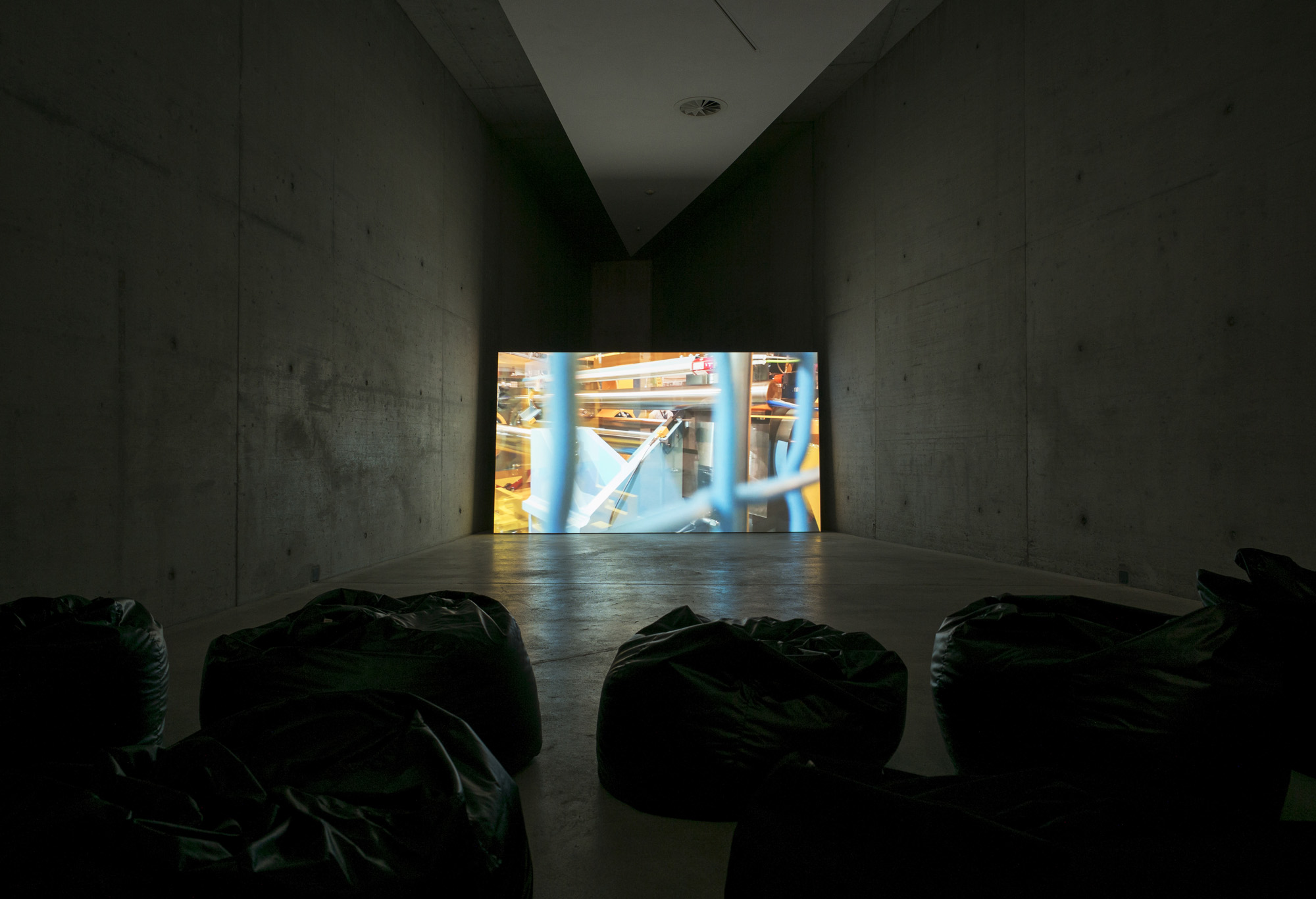
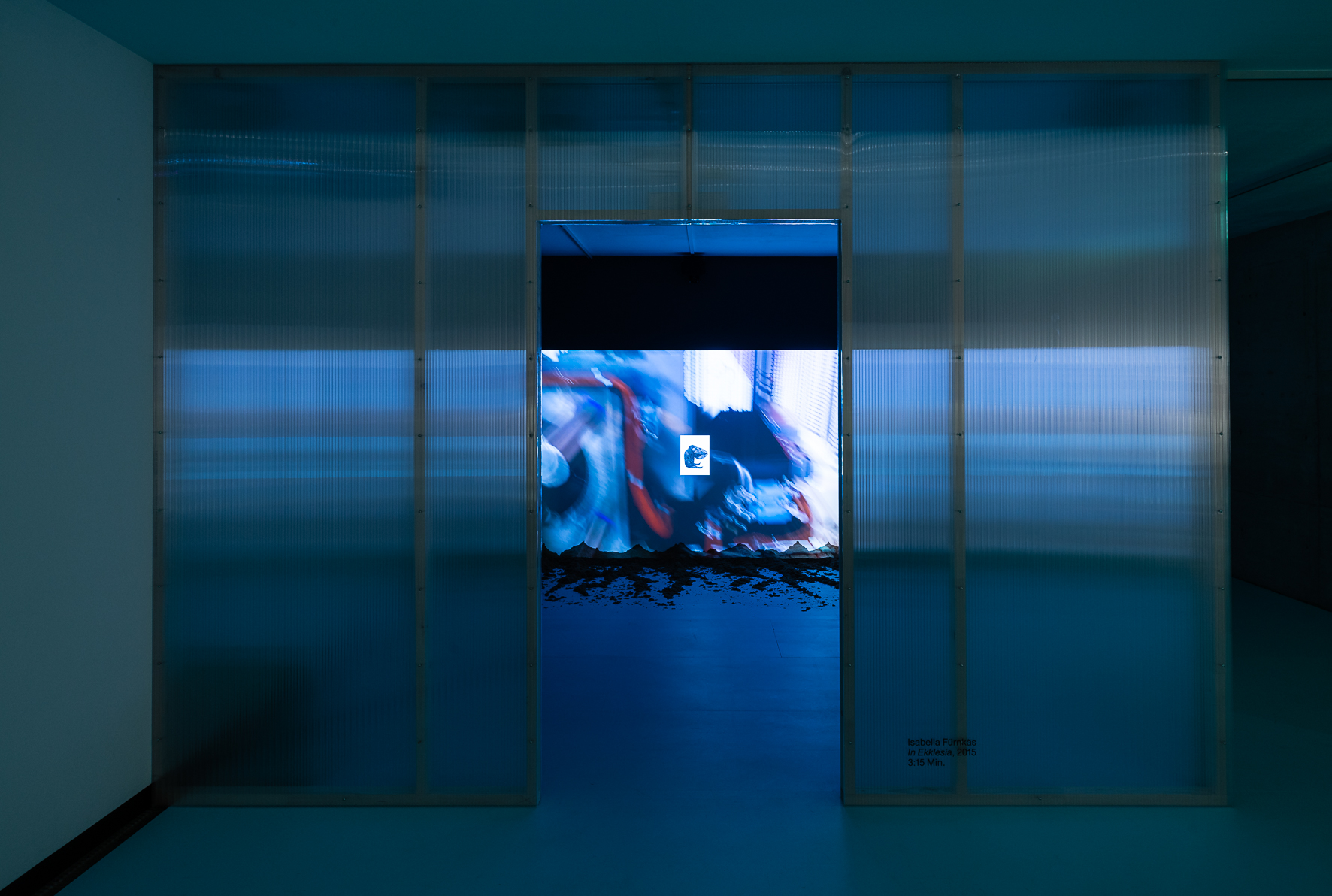
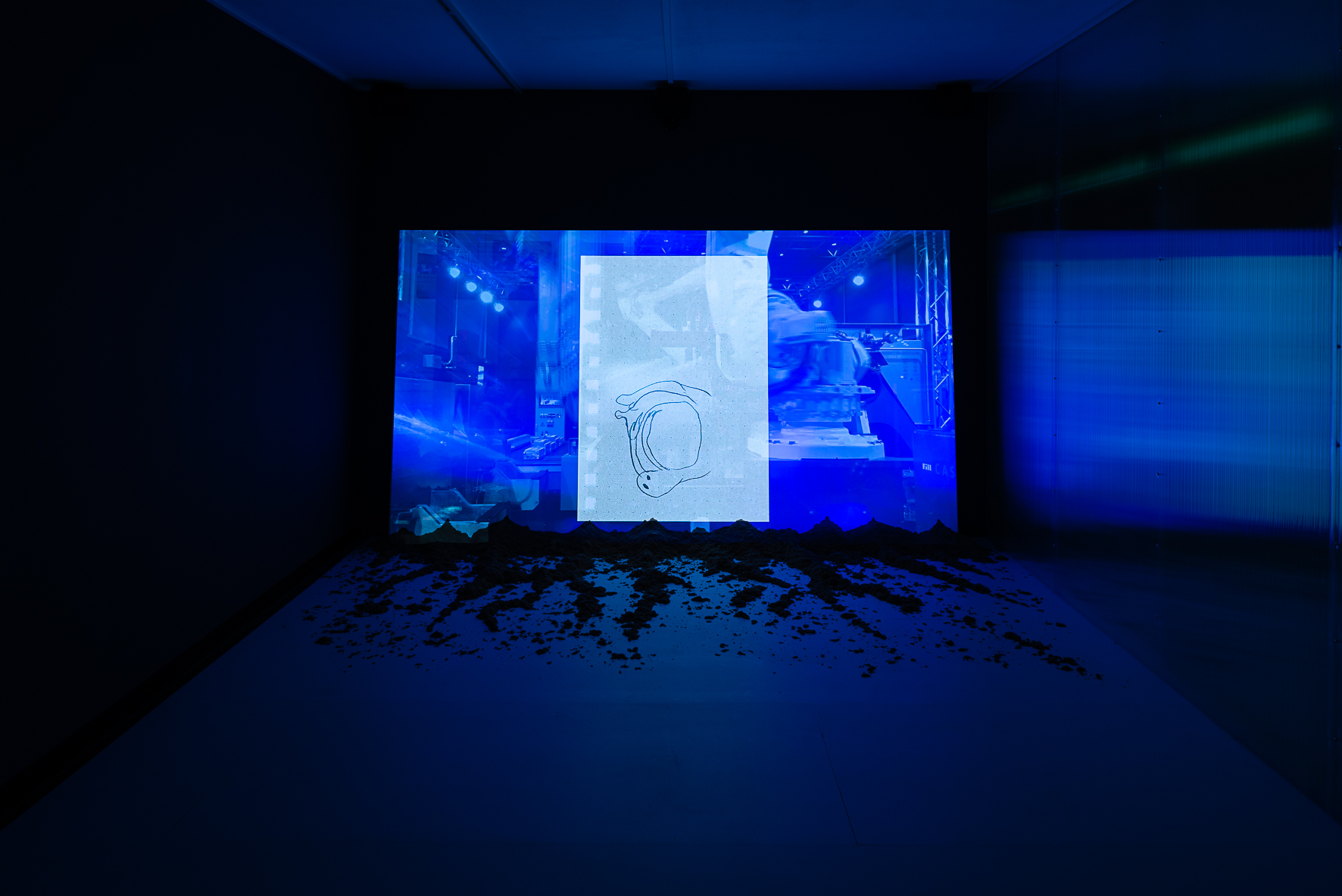
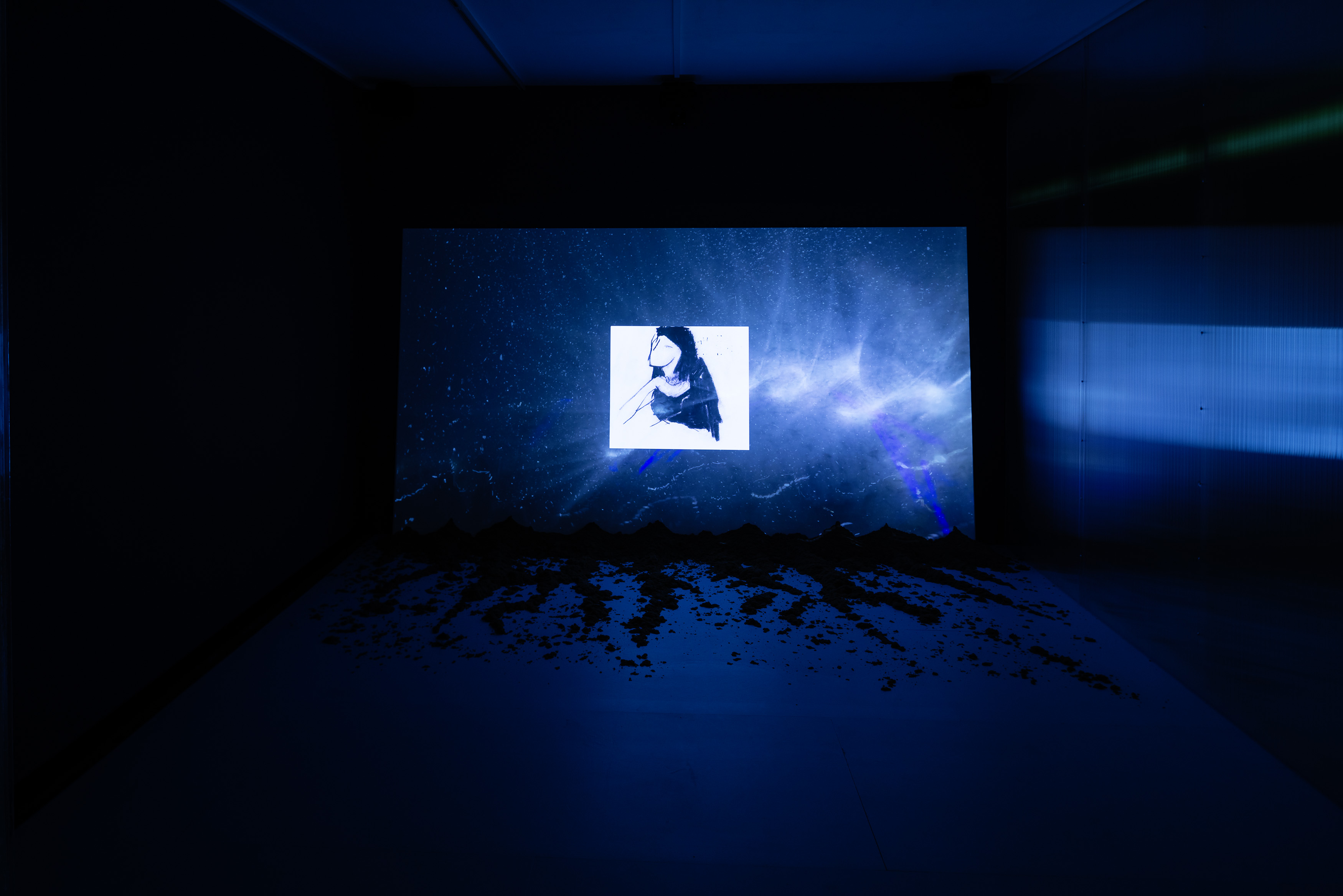
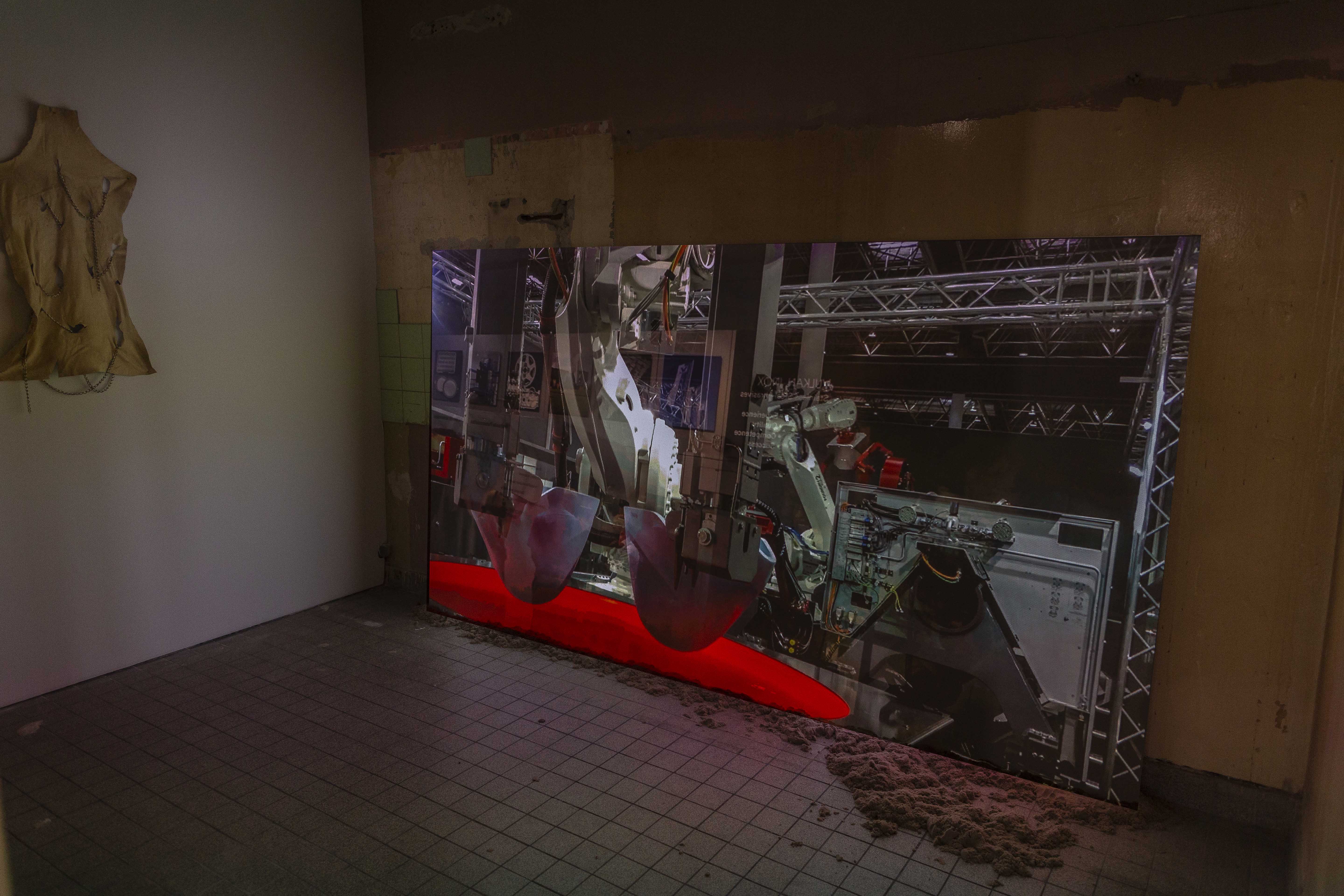
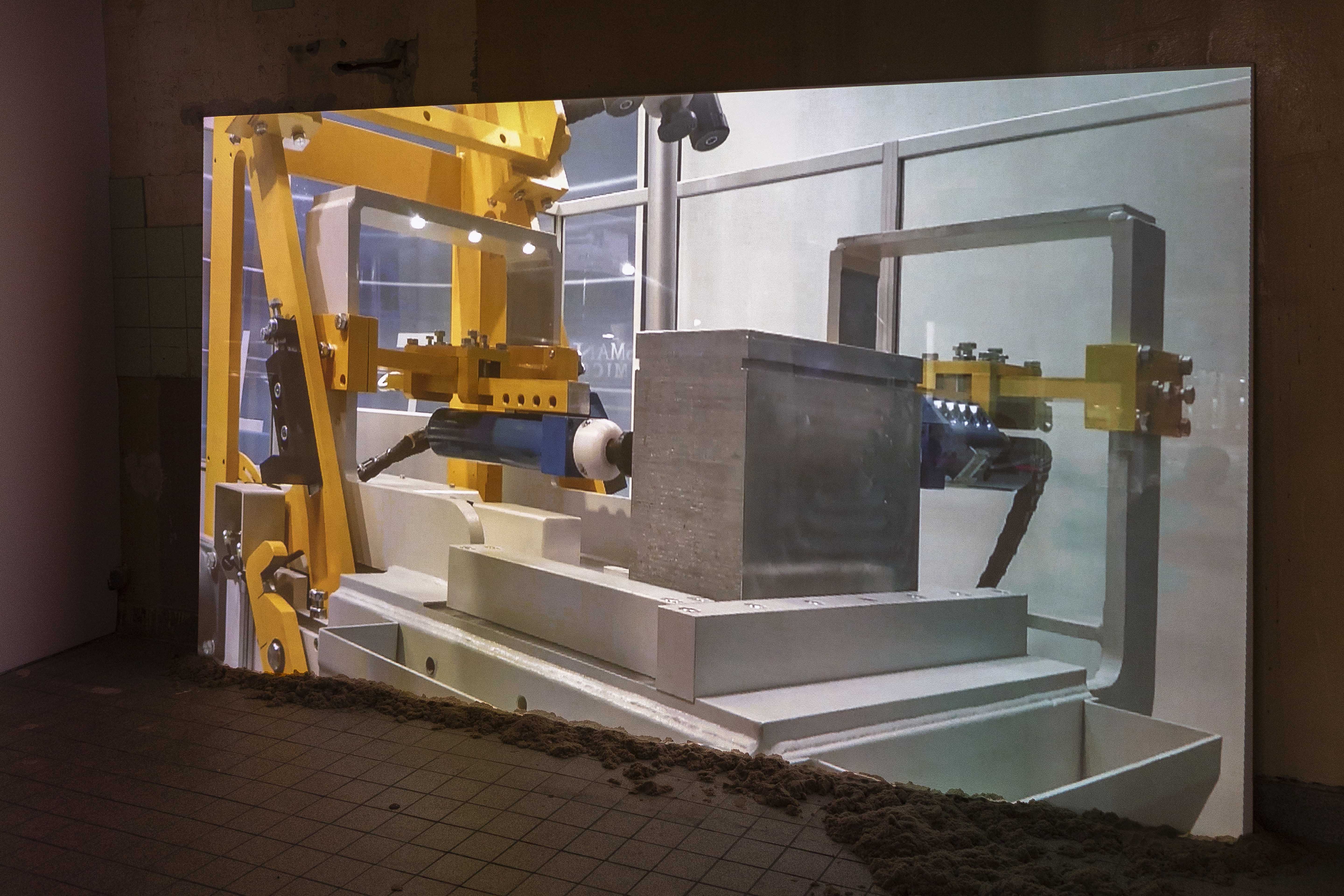
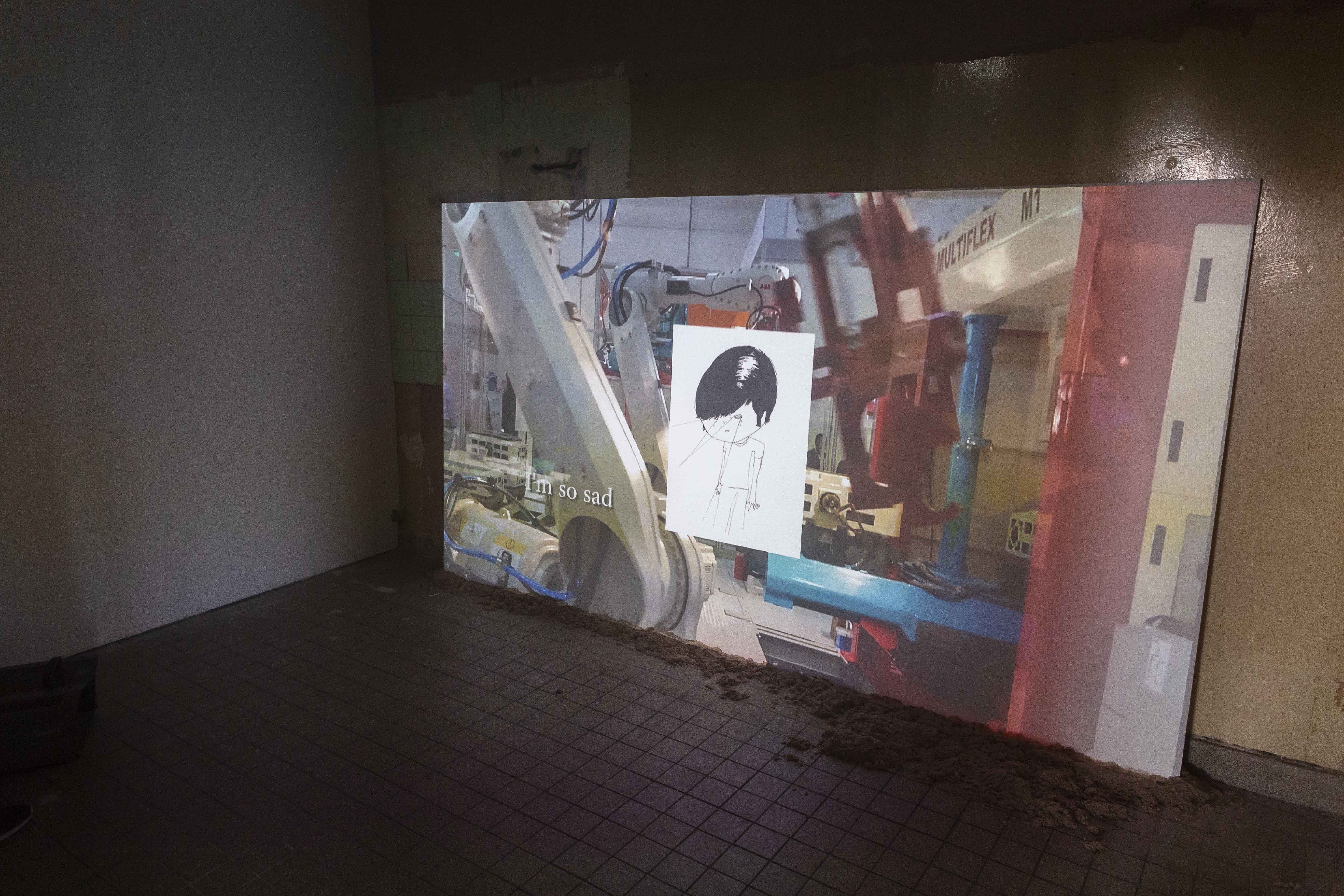
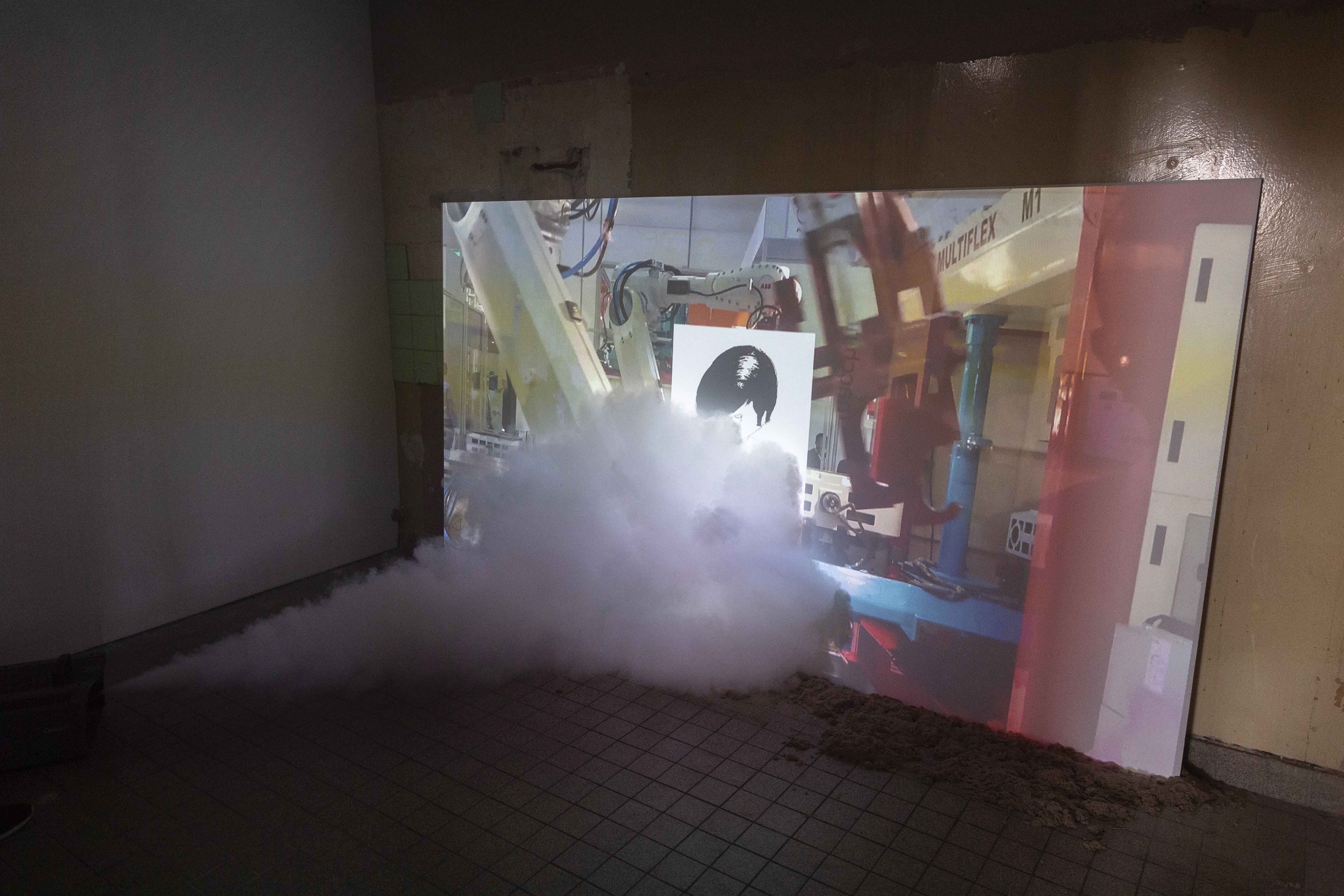

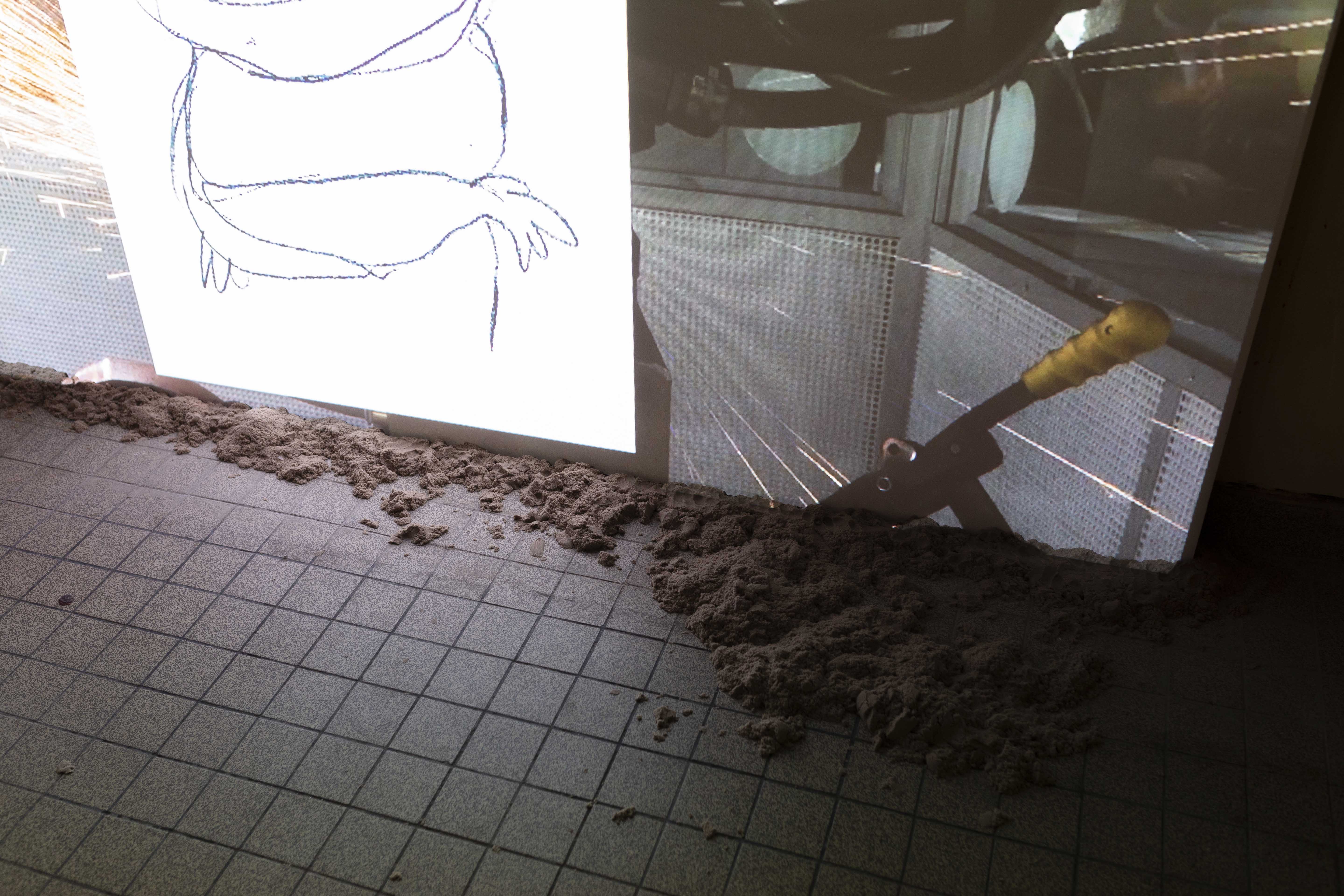
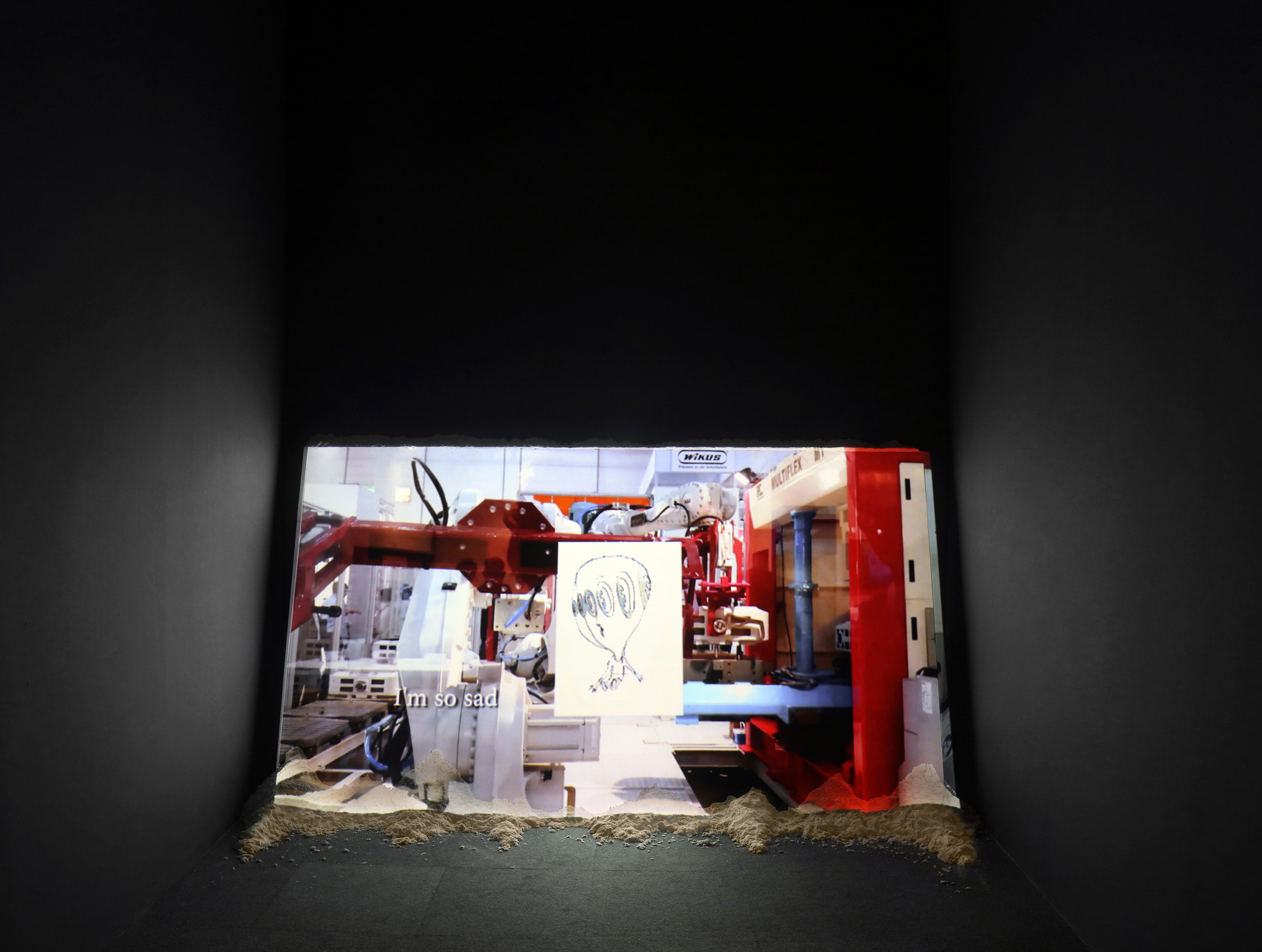
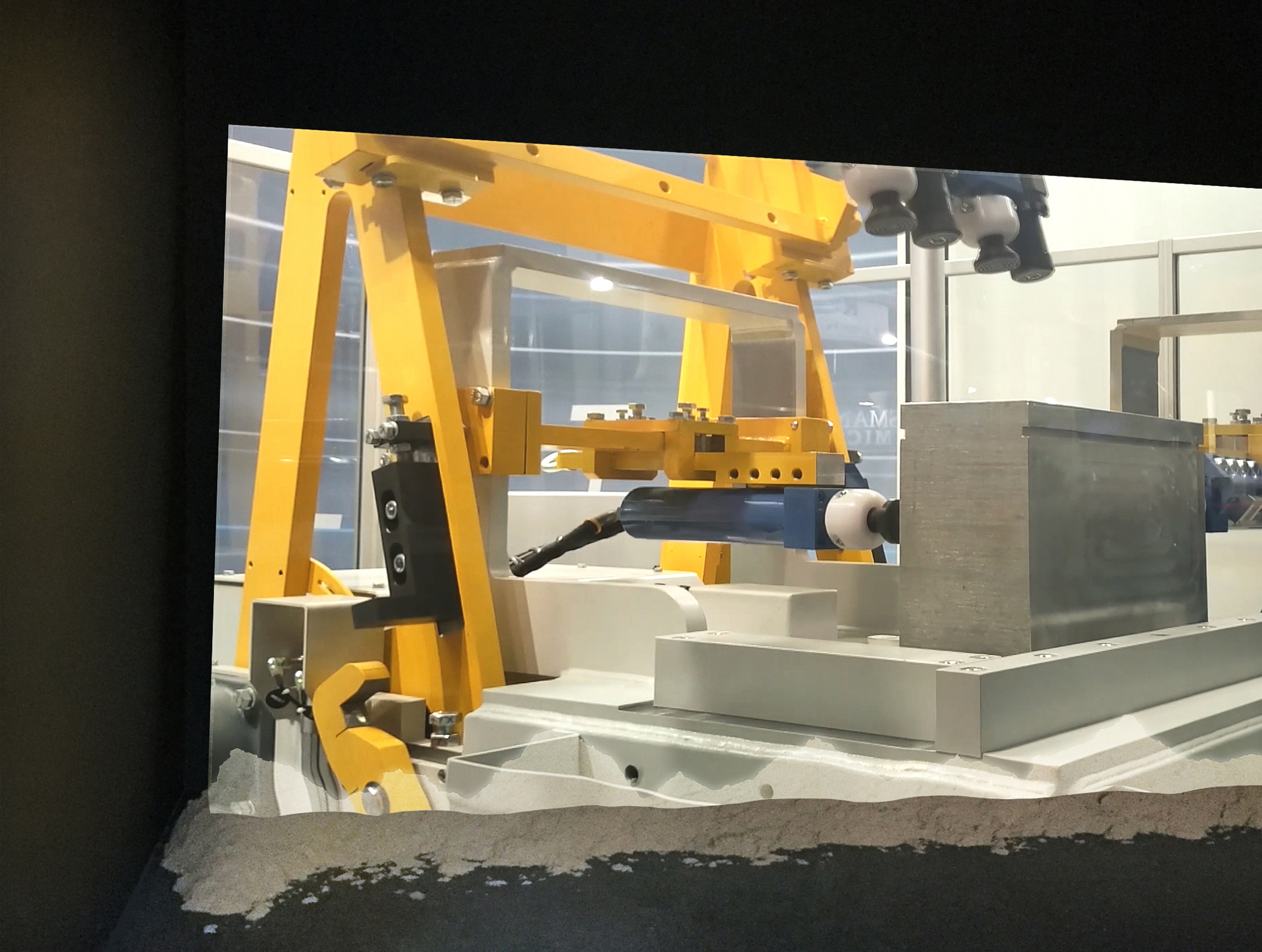
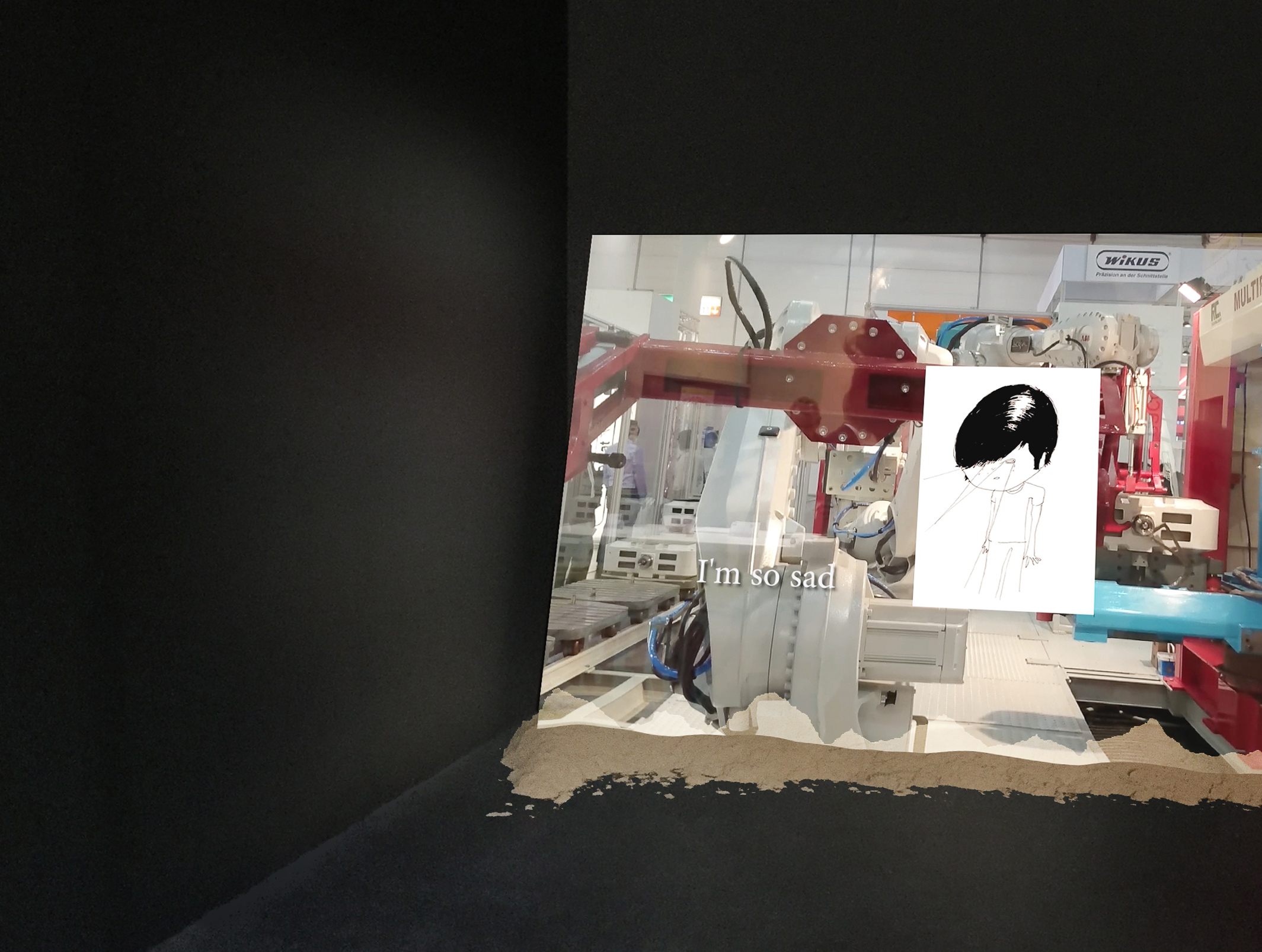
In Ekklesia
Duality is central to Isabella Fürnkäs' work: two different worlds, that of man and the machine, come together. In Ekklesia (2018) is a video installation in which images of machines at a technology fair filmed by Fürnkäs and images of dancing people at a rave flash through each other. At first, those worlds may not seem to have much in common, until the repetitive movements of the robotic arms merge into those of the ravers. Man and machine are connected in an endless dance: the machines dance like people, the people look like machines. Both the robots and the ravers are slaves to the rhythm.
Since industrialization, the automation of society continues to increase. In Ekklesia shows from an abstract point of view how many similarities and connections there are between man and machine. On the one hand this causes a somewhat dystopian feeling, on the other hand as a spectator you also experience the enormous energy that gets released. Fürnkäs plays with the idea of utility by focusing on continuous movement. Machines produce machines that will later produce machines. Ravers dance together with other ravers with identical movements to the rhythm of the music. Man and machine meet in the same state of unconsciousness, of emptiness. Could this be the reality of New Babylon? Machines in the infinite dance of labour, people in an infinite dance with each other.
Our current world is both utopian and dystopian: production makes everything possible, but at the same time destroys a lot. The climate crisis shows us that we cannot do, cannot make and cannot want more and more forever; capitalism creates great differences between people. In Ekklesia responds to this. It is the longing for a certain state of blindness, because it is too difficult to face reality. By moving, dancing and playing we can escape from everything around us for a while. Collective dancing in the club is a silent, bloodless protest; just like Provo danced nonviolently and playfully around the Lieverdje in Amsterdam in the 1960s.
- Text by Tessa Kalsbeek
A crossover of hyperactivities: rapidly alternating images of nervous assembly robots and flickering impressions from a rave. Two constellations that could not be more different, a party and an assembly, both driven by the same beat, the same craving for repetition and perpetuity: slaves to the rhythm. In her video work In Ekklesia, Isabella Fürnkäs turns the archetype of democratic public life (in antiquity the ecclesia represented the core of Attic democracy) into a farce. Instead of an assembly of free, politically mature citizens eager to participate in discussion, Fürnkäs presents an encounter between human and machine, both indulged in a mute dance of endless activity. The automation of production – the future of labour – continues with the automation of pleasure – the future of leisure. It's up to the viewer to determine whether politics still play a role in this scenario.
- Text by Maximilian Steinborn
Isabella Fürnkäs presents a dystopian techno-economic future where there is no space for human language or human labour. Fürnkäs’ video installation In Ekklesia (2015) offers a speculative vision of labour in the era of robotics. A projection screen, resting on a pile of kinetic sand, depicts industrial machines at work. Footage of different industrial machines and robots is interspersed with images of ballpoint pen drawings by Fürnkäs, as well as documentation of rave culture. The mix of industrial imagery and party culture echo each other as the robotic movements seemingly move in time with the technoid sounds.
The growing automatization of unskilled labour leads to a rise in unemployment and work precarity. What started as the Fordist dream of a growing economy turned into a nightmare. Today, job insecurity, worklessness and financial instability preoccupy a generation of anxious and disassociated workers. Fürnkäs grasps the discrepancy between intimacy and productivity, labour and leisure, between euphoria and anxiety by layering image, sound and lyric in this moving image installation. The fast images are interspersed by moments of stasis and dreariness.
“I am so sad”
“I am transparent”
“I am losing my language”
The loss of language the vocalist refers to here, invokes a loss of power and control. The kinetic sand, framing the projection screen, suggests the quicksand-like quality of a system that once it grabs you, won’t let go. As Mark Fisher wrote, capitalism is “a monstrous, infinitely plastic entity, capable of metabolizing and absorbing anything with which it comes into contact.”
- Text by Marian Stindt
The title, In Ekklesia, comes from the Greek word ‘ecclesia,’ which refers to the democratic parliament that served Athens in its halcyon days by being open to male citizens every other year. Solon, an Athenian legislator and a sage, allowed all citizens to serve the parliament regardless of their social class in BC 594. The Ecclesia made decisions about war, military strategies, and all judicial and administrative issues. This work satirizes various facets of humans and machines in the 21st century, unconsciously within a dystopian environment.
Isabella Fürnkäs introduces a method of combining and overlaying countless images in her work, providing the new experience of sensations that act in ambiguous flows, movements, interference, and interjection. The piece is about the new metaphysical and material connections appearing through digital conversations that are divorced from the general notion of time and space, as well as isolation and alienation.
- Text by Hyun Jeung Kim
In Ekklesia, 2015
Single-channel video installation, kinetic sand, flatscreen 40’’ / projection approx. 3 x 2,5 m, video 3:15min, color/sound, loop
Exhibitions
POST & Constant101, Arnheim, The Netherlands (2022), Critics’ Pick: Rotterdam, Wien, Frankfurt, Blinkvideo (2019), Kunsthalle Wien, Vienna (2018), KIT, Düsseldorf (2018), PS120, Berlin (2018), Millennium Monument Museum, Beijing (2017), NRW.Medienwerk / NRW Forum, Düsseldorf (2016), Kunstverein Mönchengladbach (2016), Nam June Paik Art Center, Seoul (2016), Filmwerkstatt, Düsseldorf (2015)
*This work is in the permanent collection of Ulsan Museum, South Korea.